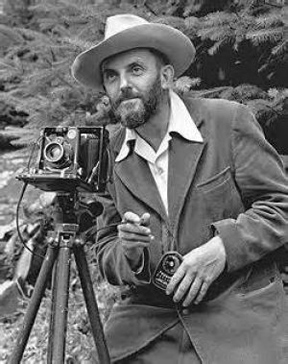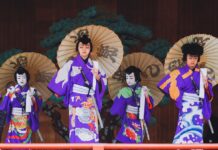
LOS ANGELES: During the last years of his life, Ansel Adams pored over the tens of thousands of negatives he’d carefully stored since his teens, setting aside 70 he determined would stand as his greatest works of art.
Adams offered to personally print, sign and sell sets of 25 photographs from them – but with several strings attached: He would select the first 10 and let buyers choose the other 15.
But not just anybody with $30,000 to spend in 1980 could purchase the collection he called “The Museum Set Edition of Fine Prints.” They would only be sold to people Adams judged serious collectors and only after they promised never to resell them. If they left the buyer’s family, they would have to go to a museum.
Among the few dozen who made the cut were the late Leonard and Marjorie Vernon, prominent Southern California collectors whose set was given to the J. Paul Getty Museum in 2011 and is now the centerpiece of “In Focus: Ansel Adams.”
Augmented by several other Adams’ photos from the museum’s collection, the exhibition marks the 30th anniversary of the photographer’s death next month. More than that, it provides a fresh look at both Adams’ genius with a camera and in the darkroom.
“What sets them off, really,” said Karen Hellman, who curated the exhibit, “is that they were created all within a span of years by Ansel Adams himself, at a time when he was printing with a particular intensity in mind.”
These were the photos the pioneer of art photography considered his best, Hellman continued, and he would take special pains in reproducing them to make sure people knew that.
“He spoke about that at the time, how later in life he wanted to create images that were more impactful,” said Hellman, assistant curator in the museum’s Department of Photographs.
Although the collection contains several instantly recognizable images, such as “Moon and Half Dome,” photographed in California’s Yosemite National Park in 1960, and “The Tetons and the Snake River” captured in Wyoming in 1942, it’s safe to say even serious students of his work haven’t seen photos quite like these.
The difference is likely best displayed in two large prints of arguably Adams’ most famous work, “Moonrise, Hernandez, New Mexico.” The museum set photo printed by Adams in 1980 hangs side-by-side with one he printed in 1948.
In a brief video clip accompanying the exhibition, Adams describes how he captured the image on a late November afternoon in 1941. He was returning to Santa Fe from a day of fruitlessly searching for subjects to photograph, when he caught a glimpse out of his car window of an “extraordinary” scene of the moon rising over a cemetery.
“I practically ditched the car, and I had some companions with me,” he recalled. “I started yelling, you know, `Get me the eight-by-ten, get me the tripod.”’
He managed to get off exactly one shot before he lost the light from the setting sun that had been illuminating the crosses marking the cemetery’s graves – and providing the element that made the photo.
Although the brilliance of Adams’ work is clearly seen in the 1948 print, it’s displayed in much more intense contrast in the 1980 version: The crosses are brighter, the night sky is darker, the buildings in the background and the landscape in the foreground are sharper.
“My parents owned several `Moonrises,’ and to put them together and look at the differences from how they changed over time is really fascinating,” said Carol Vernon, who with her husband, Robert Turbin, gave “The Museum Set” to the Getty.
Under her parents’ agreement, the photos could have stayed in the family, but she and her husband thought it better for the public to have a chance to see them in an environment where they could be carefully preserved in the future.
“Composition was paramount for him and he spent a lot of time before he ever pushed the button and snapped the shutter,” said Vernon, who got to know Adams over the years. “But he also was an incredible technician in the darkroom.”
How he developed those skills is explained in the exhibition, which includes photos ranging from 1921 to 1960. It was in the 1940s that Adams came up with his Zone System, dividing an image into 10 specific zones, ranging from black to white.
And it was while photographing “Monolith, The Face of Half Dome,” in 1927 with a camera with a glass-slide negative that he said he devised the system for picture-taking called Visualization.
“As I replaced the slide, I began to visualize how the print was to appear,” Adams would say later. “I began to see in my mind’s eye the finished product.”
That, said Kurt Molnar, a photography instructor who in his early 20s worked in Adams’ gallery and lived in a shack next door to him, was the greatest lesson he imparted – to every art photographer who followed him.
“More than anything I learned from Ansel was his ability to take pictures with his eyes and with his mind,” said Molnar, who now teaches photography at Lake Tahoe Community College in California’s Sierra Nevada, where Adams captured so many of his iconic images.
“Let’s say you’re standing on the edge of the Grand Canyon,” Molnar continued. “Most people are going to see the entire vista. He could envision, he could see in his mind, the finished product before he even took the picture.” -AP






